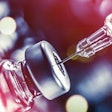
It all started with ominous reports at the end of 2019 about a highly contagious virus that had emerged in Wuhan, China, seemingly a world away. But a few months later, many aspects of life across the globe would be in shambles, and lab medicine professionals would find themselves at the center of the worst public health crisis in 100 years.
The earliest stories in LabPulse.com about SARS-CoV-2 included a news item on January 17 about the publication of the full genome of the novel coronavirus and screening of air travelers coming in from Wuhan, per guidance from the U.S. Centers for Disease Prevention and Control (CDC).
One year later, LabPulse.com interviewed leaders in lab medicine for a look back at what went right -- and what went very wrong -- as the specialty dealt with the COVID-19 pandemic over the course of 2020.
No one was prepared
When did the magnitude of the COVID-19 pandemic become apparent for lab medicine professionals? For Dr. David Grenache, PhD, president of the American Association for Clinical Chemistry (AACC), it started to really sink in at the end of February, seeing how the outbreak was playing out in Italy and with cases already being reported in the U.S.
 David Grenache, PhD, president of the AACC.
David Grenache, PhD, president of the AACC.The scale of the crisis was becoming readily apparent from February to March, commented Dr. Patrick Godbey, president of the College of American Pathologists (CAP). But Godbey said it really hit home for him on March 10, with a report of the first case at a site affiliated with Southeastern Pathology Associates in Brunswick, GA, where he serves as president and CEO.
"A lot of things changed after that point," Godbey said.
Meanwhile, diagnostics companies were hit in parallel and caught off guard. Manufacturers had been aware of the risk for emerging diseases, including flu pandemics, but more in the sense of being watchful as opposed to fully prepared, commented Bruce Carlson, publisher of market research firm Kalorama Information. Their thinking had been shaped by experience with prior outbreaks like bird flu, Zika, and Middle East respiratory syndrome (MERS), all of which were mostly manageable.
"Nobody was prepared at any level -- not labs, not governments, not diagnostic companies -- for a pandemic of this size," Carlson said.
With the hard times came a better appreciation of how hard it is to turn out good, reliable lab results as quickly as possible in the most cost-effective manner possible, Godbey said. In the case of COVID-19, if a patient came in with a fever or cough, it was up to the lab to determine if that patient needed to be isolated.
"I am sorry that it took a pandemic to remind people of this, but the vast number of decisions are made on work that comes out of the laboratory," Godbey said.
 Dr. Patrick Godbey, president of the College of American Pathologists.
Dr. Patrick Godbey, president of the College of American Pathologists.Labs needed to quickly learn how to communicate with a myriad of healthcare delivery providers, said Grenache, who is chief scientific officer at Tricore Reference Laboratories in Albuquerque, NM.
"Many healthcare systems realized that the laboratory was such a vital component to addressing their testing needs that they had to engage the laboratory at much higher levels of discussion," Grenache said. "Working out the kinks in communication strategies between healthcare delivery systems and laboratories took some time and finesse."
In addition to implementing testing for SARS-CoV-2, pathologists and other lab professionals shared information about tests early through preprint publications, helping move the community forward through the pandemic, said Dr. Gary Procop, chair of the American Society for Clinical Pathology's (ASCP) commission on science, technology, and policy. They were also on the forefront of getting convalescent plasma from recovering patients, which was in short supply as a treatment for the virus, Godbey said.
Early in the pandemic, major IVD companies like Abbott and Roche ramped up production quickly, and Quest and LabCorp were able to roll out tests to detect infection with the SARS-CoV-2 virus, but it was not enough to match the huge demand, Carlson commented. In the past, outbreaks had been somewhat predictable based on demographics; but all of a sudden, a good portion of the population could potentially contract the virus and require testing, a big shift from more isolated outbreaks of the past.
This was difficult to prepare for, particularly as the testing effort for COVID-19 required molecular tests, which are very sophisticated and require trained personnel as well as products that involve intense biological production, Carlson said. Both labs and diagnostics companies faced overwhelming demand for molecular tests, and at the same time saw a huge decrease in volume and revenue for clinical chemistry tests, he added.
What went wrong
During the pandemic, the requirement for CLIA-certified labs to get emergency use authorization (EUA) from the U.S. Food and Drug Administration (FDA) in order to make their own laboratory-developed tests (LDTs) for COVID-19 was a big barrier.
Initially, a test developed by the CDC was the only one with an EUA, and the agency initially shipped faulty test kits to public labs. During one session at the AACC 2020 annual meeting, held virtually in December, Morgan Pence, PhD, reflected on the difficulty community hospital labs had in getting an EUA, causing them to wait for a commercial assay instead.
 Bruce Carlson from Kalorama Information.
Bruce Carlson from Kalorama Information.Turnaround times for molecular tests were long and some began offering serology testing, recalled Pence, director of clinical and molecular microbiology at the Cook Children's Medical Center in Fort Worth, TX, during his AACC presentation.
But in contrast to the restrictions on diagnostic tests, the FDA regulations on commercial antibody tests had been loose, and a flood of products entered the market, many with questionable accuracy. The FDA responded in May, announcing it was tightening regulations on commercial antibody tests.
The issues with antibody tests that the specialty was grappling with in the spring of 2020 have largely gone away since then, Grenache said.
"With time, people realized antibody tests by themselves were really not very useful -- they weren't clinically actionable," he said.
As for LDTs, the U.S. Department of Health and Human Services released guidance on August 19 allowing labs to run their own tests without an EUA. But during professional association meetings at the end of the year, a common refrain from speakers was that this was too little too late.
The genome of the SARS-CoV-2 virus was available early on, and CLIA-certified laboratories are highly skilled at developing tests with this information, noted Procop, who is a pathologist at Cleveland Clinic. When the regulatory policy changed, labs had to rush to catch up.
"That clearly cost us a lot of time. That was a major misstep by our country and that should be addressed going forward," Procop said. "We should not have some of the brightest minds in the world having to respond to a pandemic with one arm tied behind their back."
Another much-cited failure during the COVID-19 pandemic was disruption of the supply chain, as reported in surveys by CAP and other lab medicine organizations, which resulted in a lack of swabs, transport media, and reagents. Admiral Dr. Brett Giroir, who led the testing efforts during the Trump administration, acknowledged persistent supply shortages during a special session at the AACC 2020 meeting.
 Dr. Gary Procop, chair of ASCP's commission on science, technology, and policy.
Dr. Gary Procop, chair of ASCP's commission on science, technology, and policy.The national supply chain should be able to provide all the materials for testing, without the need to resort to alternative strategies, such as pooling, Procop said.
"Necessity is the mother of invention," but if there were appropriate supplies, labs wouldn't have needed to go down those paths, Procop said.
Procop also sees the lack of a national testing strategy in the U.S. as a failure. COVID-19 response efforts, including testing and reopening, were largely left up to states. There were 50 very good governors doing their best for their states in 50 different ways, Procop noted. In contrast, the ASCP has been advocating for a strong national approach guided by the top experts in various fields of diagnostics.
As of January 31, over 26 million cases of COVID-19 had been reported in the U.S., with more than 440,000 deaths nationwide, according to the Johns Hopkins Coronavirus Resource Center. Variants discovered through surveillance efforts in South Africa and the U.K. and the pace of the vaccine rollout have been raising alarm.
President Joe Biden has pledged a federally directed effort against the pandemic that includes a call to "ensure all Americans have access to regular, reliable, and free testing." His administration's plan includes a doubling of the number of drive-through testing sites, investment in at-home tests, and the creation of a Pandemic Testing Board. CAP recently issued a statement on Biden's plans, encouraging greater coordination and management of testing supplies.
Lasting changes
As with society generally, some of the changes that have swept over lab medicine in the last year are likely to be lasting, regardless of how quickly the pandemic gets under control.
Molecular point-of-care (mPOC) instruments gained ground during the pandemic, providing rapid results and allowing for screening of people outside of the hospital setting. There was enormous growth for mPOC instruments, with leaders in the space, including Abbott, Roche, Cepheid, and BioMerieux, selling more systems and reaping greater revenues, a development unforeseen based on 2019 figures, according to Kalorama Information.
 Dr. Adam Booth, immediate past chair of CAP's Residents Forum Executive Committee and a fellow at Harvard.
Dr. Adam Booth, immediate past chair of CAP's Residents Forum Executive Committee and a fellow at Harvard.Kalorama's Carlson sees this as a lasting trend. COVID-19 could become endemic and the units now in place may also be used for highly accurate diagnosis of COVID-19 and other respiratory infections like flu and respiratory syncytial virus. Differentiating bacterial from viral infections has the potential to reduce unnecessary use of antibiotics and molecular POC also enables the differentiation between flu types A and B.
Drive-through testing at hospitals and pharmacies is likely to continue. And at-home testing is getting a lot of attention, though ensuring adequate sampling by consumers is crucial for this to work.
During the pandemic, people have learned to work virtually. Labs have been challenged in that patients have become accustomed to telehealth visits but may still need to get to leave home for testing. There has been increased pressure for home sample collection with specimens delivered to the lab, Grenache commented.
Furthermore, digital pathology got a push during the pandemic with an easing on reimbursement rules for remote readings and an increase in the number of installations.
Annual meetings of CAP, the AACC, the Association for Molecular Pathology, and the ASCP, were all held virtually in 2020. Advantages include savings in costs and time, with opportunities for more to attend the educational parts of meetings, commented Dr. Adam Booth, immediate past chair of CAP's Residents Forum Executive Committee and a fellow at Harvard.
But on the flip side, professionals miss out on seeing friends and colleagues -- a hybrid of virtual and in-person meetings could be a nice compromise for the future, he said.
Booth also noted that there is a continued need and challenge for lab professionals to provide information about testing, with the goal of developing a greater scientific understanding in the general population.
Prior to the pandemic, there were concerns about having enough new professionals enter the field, but the effect of lab medicine is now clearer.
"That's been a silver lining in this terrible situation -- it has brought pathology to the forefront of the public eye and in the eyes of the other specialties within medicine," Booth said. "I am hopeful that would encourage students to take a close look at it when evaluating what field they want to go into."



















